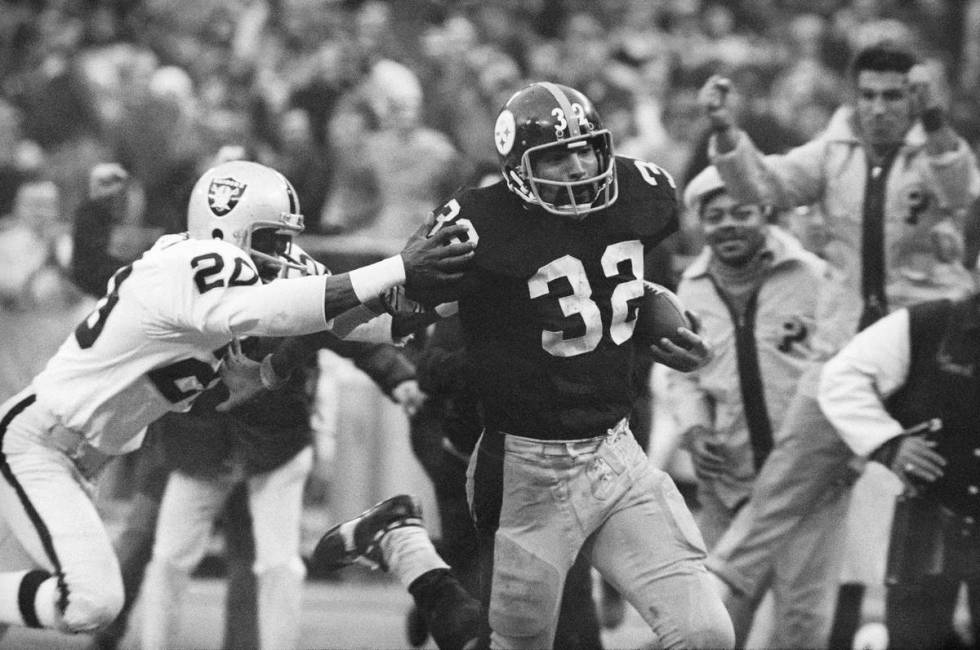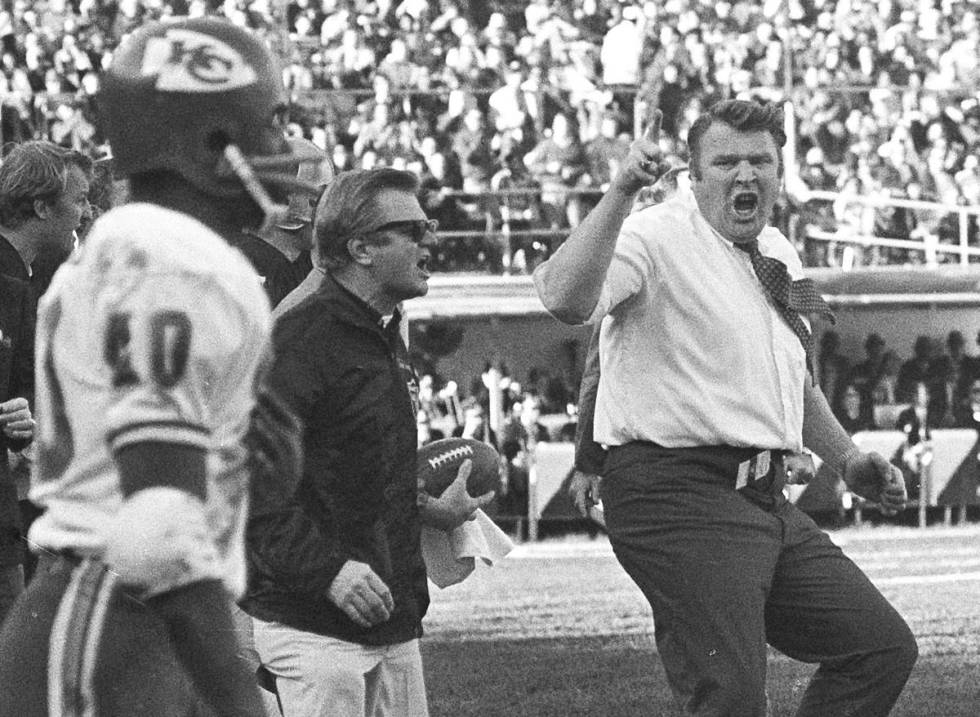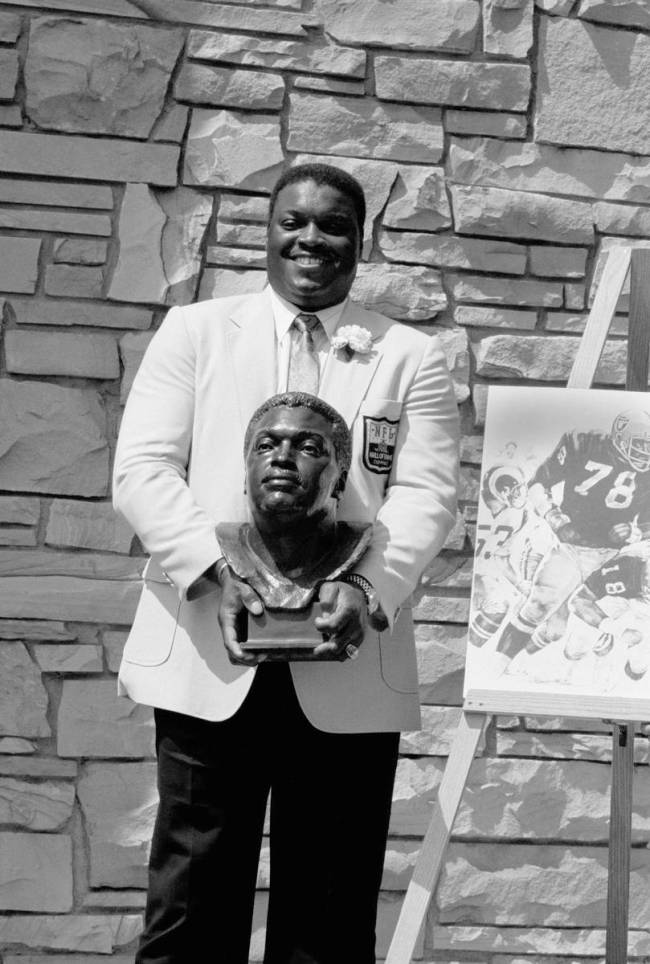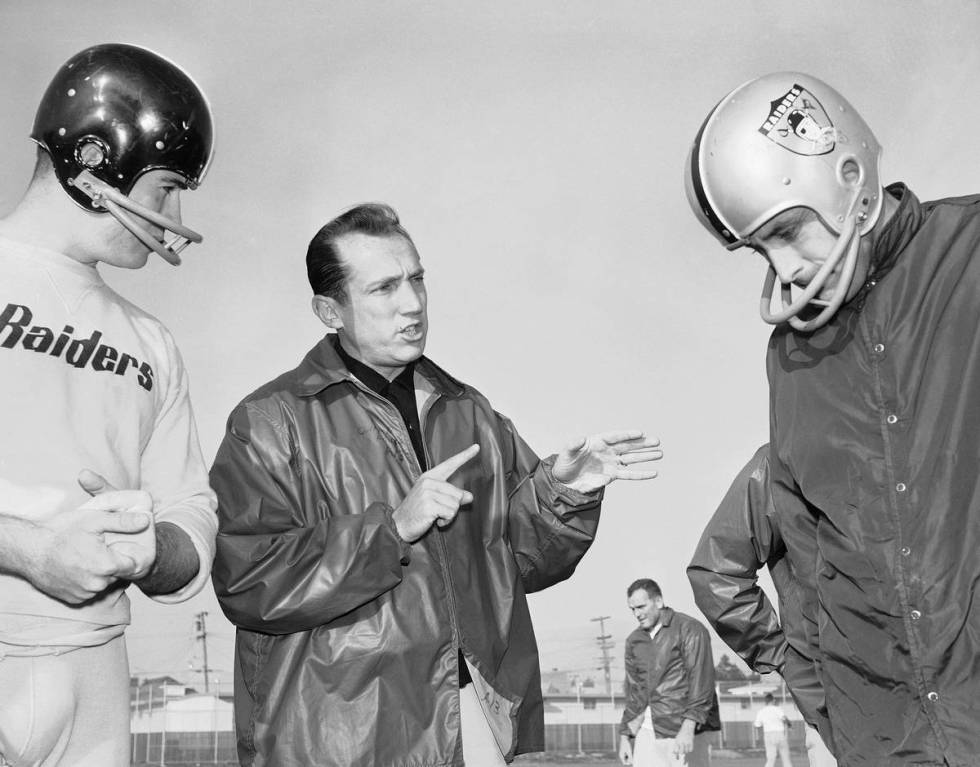Silver and Black facts: 10 things you might not know about the Raiders
Whether you are a die-hard Raiders fan or just want to hold your own in cocktail party banter, here’s a condensed playbook to help you prepare for the team’s first season in Las Vegas.
1. No shortage of epic plays
No sports team has as many iconic, specially named plays as the Raiders. From the “Immaculate Reception” to the “Tuck Rule” to the “Holy Roller,” the Raiders are connected to some of the most memorable plays in sports history.
Not all the plays worked out well for the Raiders, though, which only adds to the allure.
They had their hearts ripped out when, leading 7-6 with 22 seconds remaining in the 1972 AFC playoffs, Steelers quarterback Terry Bradshaw heaved a fourth-and-10 pass while lined up at his own 40-yard line. The football ricocheted off either Steelers running back John “Frenchy” Fuqua or Raiders safety Jack Tatum only to miraculously fall into the inches-off-theturf hands of Franco Harris. He carried it into the end zone for a game-winning touchdown on the play forever remembered as the “Immaculate Reception.”

Some of them worked out, though, like the “Holy Roller.”
With 10 seconds left in a game against the San Diego Chargers and trailing 20-14, Raiders quarterback Kenny Stabler dropped back to pass from the Chargers 14-yard line and fumbled the ball at the 24 just as he was about to get sacked. The football took a wild bounce forward, where Pete Banaszak nearly recovered it at the 12 but, losing his balance, threw the ball forward toward the goal line. Raiders tight end Dave Casper caught up to it next and half kicked, half pushed the ball into the end zone where he eventually fell on it for the game-winning touchdown.
2. Hard-hitting defense, literally
A Raiders linebacker once punched out a GM. Nothing captures the Raiders’ tough-guy persona more than the photo of linebacker Matt Millen punching Patriots general manager Patrick Sullivan after the Patriots upset the then-Los Angeles Raiders in a 1985 AFC divisional round playoff game.
Sullivan had been trash-talking the Raiders from the sideline during the game and continued afterward on the field. Millen approached as Sullivan argued with the Raiders’ Howie Long and he took a swing — a moment captured in a now-infamous Sports Illustrated photo.

3. Suiting up for battle
The Raiders once won a Super Bowl right in the middle of suing the NFL.
The Raiders have had a handful of legal battles with the NFL, but none more iconic than their attempt to move from Oakland to Los Angeles in 1979. A flurry of legal maneuvering ensued between the league, which tried to block the move, and Raiders owner Al Davis, who eventually filed an antitrust lawsuit against the NFL.
In the meantime, the Raiders advanced to Super Bowl XV and beat the Philadelphia Eagles in 1980. Afterward NFL Commissioner Pete Rozelle stood in front of a national TV audience and handed a triumphant Davis the Vince Lombardi Trophy.
4. The only true Nation
The Raider Nation is the first — and some would say, the only — sports nation of all time.
With due respect to all of the “Nations” out there in the sports world, the true original, and therefore only officially recognized Nation, is Raider Nation.

Some credit Al Davis with coining the term in the early 1960s, while others believe it’s from the famous “Autumn Wind” poem dubbed “The Battle Hymn of the Raider Nation.”
5. Forward-thinking franchise
The Raiders have been at the forefront of minority and female hirings throughout their history.
Long before the “Rooney Rule” was adopted to ensure minority candidates were given a fair chance to interview for head coaching jobs in the NFL, the Raiders were well on their way to being an inclusive franchise.
Davis hired Art Shell, the first African American head coach, and Amy Trask, the first high-ranking female chief executive. He also hired Latino American Tom Flores as his head coach. And current owner Mark Davis hired African American Reggie McKenzie as his first general manager upon taking over for his late father.
6. In the years before A.D.
Al Davis is forever the face of the Raiders franchise, but it didn’t start out that way.
Davis and his family are so synonymous with the Raiders that the assumption is they’ve been linked forever.
In fact, the newly created Oakland Raiders operated for two years without Davis, who, at the time, was a young coach learning the ropes at USC and with the Los Angeles/ San Diego Chargers.
But in 1963, Raiders managing general partner F. Wayne Valley took a chance on then-33-yearold Davis, hiring him as head coach and general manager.
Davis left the team in 1965 to be AFL commissioner, but when the NFL and AFL agreed to merge eventually into one NFL, Davis resigned.
Soon afterward, he formed the holding company A.D. Football, Inc., and bought a 10 percent stake in the Raiders. He was named head of football operations and took over control of the Raiders in 1972, when he became the sole general partner.

7. NFL nomads
The Raiders are the first team to move out of a city then move back.
In 1982 the Raiders moved from their birthplace in Oakland to Los Angeles, where they spent the next 13 years and even won a Super Bowl in 1983.
But after failing to secure a new stadium deal in L.A., the Raiders moved back to Oakland in 1995. Whatever anger their Bay Area fans had quickly was set aside, and the region welcomed the Raiders back with open arms.
8. Bombs away
The Raiders were at the forefront of using speed and big-play ability to attack opponents downfield.
The “Vertical Game” is still synonymous with the Raiders, who believe the best way to attack is using speed at the wide receiver position and throwing long. Hence the “Mad Bomber” moniker given to ex-quarterback Daryle Lamonica, who used the long bomb to beat opponents in the ’60s.
The influencer, as always, was Davis. He was obsessed with speed, convinced it could not be taught, developed or matched.
9. Al Davis’ eye for detail
You can thank Al Davis for the Raiders colors and logo.
Thanks to a newspaper fan contest to name Oakland’s new AFL team in 1960, the Raiders originally were named the Oakland Señores. But after accusations that the vote was rigged — the team’s first owner Chet Soda always referred to his friends as Señor — and numerous jokes about the name, it was changed to the Raiders.

The team’s first color scheme was black and gold, which it wore the first three seasons. But soon after taking over as head coach and general manager, Davis adopted the now iconic silver and black and updated the logo and helmet design.
The helmet color switched from black to silver. Actor Randolph Scott was the inspiration for the eye-patchsporting pirate wearing a Raiders helmet, with two swords crossed in the background. The Oakland Raiders hovered above a pirate in the previous logo, but Davis dropped the Oakland part and went with Raiders.
10. No decommissioned digits
The Raiders do not honor players by retiring jersey numbers.
Despite the practice being common throughout sports, Al Davis chose not to do so. That might seem odd considering how many great players the team has produced — 23 have been inducted into the Hall of Fame — but various accounts say Davis wanted to avoid promoting one Raiders player over another.













